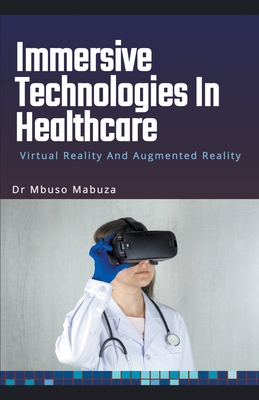
Immersive Technologies In Healthcare: Virtual Reality And Augmented Reality
Description
Virtual reality (VR) and augmented reality (AR) are being increasingly used in healthcare, and especially in patient education. Although these two technologies are very similar, virtual reality engages users by transposing their virtual avatars into an artificial environment for users to interact with, while augmented reality engages users in the real environment by overlaying virtual elements in the real world.
VR is already transforming medical education. VR offers distinct benefits for learners, faculty and the health system. It is helping to free learning from the classroom, allowing learners to apply their knowledge to practise and learn from mistakes. It focuses on improving competencies and places the emphasis on autonomous, blended learning, which is expected from the learners of today.
Healthcare and medical staff can use virtual environments to train in everything from surgical procedures to diagnosing a patient. VR training curriculums were created in order to allow both training and practising surgeons to a safer operating room experience for their patients. VR can be incorporated into a surgeon's preoperative planning, utilised in unison with artificial intelligence (AI) algorithms, to help virtually map a procedure.
VR is being incorporated into occupational therapy to help stroke patients recover. VR-based rehabilitation is a proven tool that creates specific scenarios for patients, allowing them to have targeted treatments for their particular recovery level and deficits.
Off-shelf virtual reality technology using simple headsets has promise for the prevention and treatment of health conditions, particularly in psychological care. For mental health issues such as dementia, depression and stress management, this technology provides an effective and better solution which enhances patient and creates a positive effect to save the life of the patient.
Virtual patients are seen as cost-effective since virtual patients are limiting the effort and expense associated with standardised patient training and can be delivered at low-cost over the internet. There is potential for virtual healthcare to address inequalities in healthcare. It can bridge the gap for marginalised and vulnerable populations living in remote settings by increasing healthcare access for children and families who may otherwise face significant barriers in having their health needs met. The main challenges of developing virtual patents are legal and technical.
With augmented reality (AR), there is no created scenario; instead, an actual event is being altered in real-time, which has significantly enhanced robotic surgery. AR can work in parallel with a telemanipulation system in order to optimise the visual field of the operating surgeon. AR is currently being utilised to overlay key anatomic landmarks during live surgery to optimise patient safety.
This book presents an account of virtual reality and augmented reality and their impact on the healthcare and medical ecosystem in the context of low-, middle- and high-income countries. The book concludes by providing future perspectives and critical reflections on VR and AR in healthcare and medicine. It also highlights the new computational medical extended reality (XR) concept, which unifies the computer science applications of intelligent reality, medical virtual reality, medical augmented reality and spatial computing for medical training, planning and navigation content creation.
The book will be invaluable to healthcare and global health professionals, health managers and programmers, health systems leaders, researchers, lecturers in faculties of health sciences, medical students, students in public health and related fields, healthcare organisations, and policymakers.
